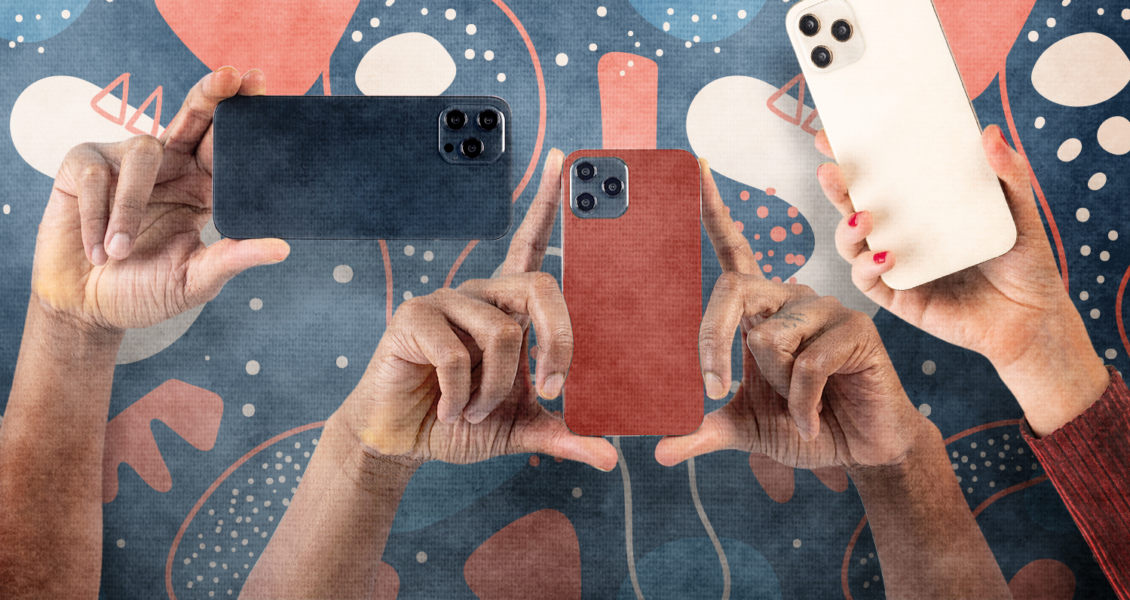Would you go to a job interview unprepared? Of course not. It’s unprofessional, and you’d probably blow your chances of getting the job.
You shouldn’t go to a media interview unprepared either.
If you’re fortunate enough to land media coverage, it’s a great opportunity. Don’t throw it away.
When you take time to prepare, you can leverage that media coverage into bigger and better opportunities and get a jumpstart on building a successful Author brand.
Set aside time to prepare for a media interview the same way you would for other important career opportunities. This will help you become an effective spokesperson for your brand.
So, how do you go about it? With media training.
This guide will walk you through what media training is, why it’s important, and what you can do to make your next media interview a huge success.
What Is Media Training?
Media training is exactly what it sounds like. It’s a form of communication training that prepares you to give audio, video, or print interviews.
The truth is, even when people are comfortable leading meetings or speaking in front of others, they rarely feel comfortable in front of a camera or microphone. That’s normal.
These days, podcasts are the most common media outlets for Authors. But depending on how the spot is recorded, those might still have a visual component.
Media training prepares you to handle tough questions, stay on message, and look calm and collected doing it. Basically, it helps you make a good impression.
And when it comes to successful book marketing, that impression matters.
That’s because the goal of book marketing isn’t really to market the book you’ve published. It’s to market yourself. In other words, your book is a tool you can use to reach your larger goals.
And media coverage can help you get there faster.
Media Training Helps You Develop Clear and Focused Talking Points
If you want to be more strategic in your communication with the media, a media training session is essential. It will help you develop clear and focused talking points.
Without solid talking points, it’s easy to let a conversation wander. You might end up talking for 30 minutes without ever getting to your main argument.
Thus, it’s best to develop finely tuned talking points before you ever enter a studio. That way, you can insert those key messages when they’re relevant.
Not only will this keep the conversation focused, but it will also ensure you have consistent messaging across all your marketing platforms.
Plus, by focusing on your message points, you can think in advance about how you want to be remembered. What’s the impression you want to leave your audience with? Do you have any catchphrases or sound bites that you want to stick in their memory?
Media Training Helps You Take Control of the Conversation
Media training helps you take control of the conversation. When people ask you unexpected or tough questions, it’s easy to be caught off guard. Being prepared will help you ensure it’s a productive conversation—not an interrogation.
You’ll also be prepared for the pace of the conversation. People new to interviews often rush their answers or try to get as much in as they can. They don’t feel comfortable taking time to think.
In fact, it’s okay to pause. You don’t have to answer right away. A solid answer is far better—for you and the listener—than a hasty, rambling, or unclear answer.
Media Training Provides Psychological and Emotional Benefits
There are also psychological and emotional benefits to media training. The more you prepare, the easier it is to get out of your own head. You’ll learn to keep your nerves and anxiety at bay.
A media trainer—or even a trusted friend or colleague—can also help you become more aware of your body language. If you’re constantly crossing your arms, gesturing wildly, or repeating nervous tics like playing with your hair, you will come across poorly on camera, even if your answers are brilliant.

When you know how to carry yourself and control your emotions, you’ll feel much more confident.
Basically, media training is invaluable for teaching you tips that will make you an effective communicator.
8 Media Training Tips for a Successful Interview
1. Prepare, Prepare, Prepare
These days, everyone is busy. But prep work doesn’t have to take much time—and it really pays off.
In fact, you don’t even have to hire a media trainer to prepare yourself. You just have to do your homework.
Media appearances are all about relationship building. Ideally, you’ll leave a lasting impression so they remember you and want to invite you back.
Start off by listening to recent podcast episodes or reading the latest articles written by your host.
I say this partly so you know what to expect but also so you can talk about a few that genuinely interested you. It’s always a good idea to give someone a sincere compliment.
Next, look at the host’s social media accounts, including LinkedIn. Do you have any commonalities, like where you’re from, industries you’ve worked in, or where you went to school?
These kinds of overlaps make it easier and more organic to build a lasting relationship.
Also, pay attention to who the audience is. I’ll say more about connecting with your audience below, but for now, just take note: you must do research.
If you want to give an effective interview, you must know who you’re talking to and who you want to reach.
2. Create Your Talking Points
First and foremost, your talking points should include what your book is. Be able to present this in a brief elevator pitch. “My book is a celebration of x…” or, “My book is a guide to y,” or “My book is a memoir about z.”
Keep it concise and clear. You don’t need to go deeply into your content. This is the 10,000-foot view.
Next, dig into the major themes of your book. Ask yourself, “What do I want the audience to walk away with?” Figure out a brief way to present all the major arguments of your book. Again, think of the big picture.
If you can come up with a couple of quick examples to illustrate those points, that’s great. But don’t get too in the weeds with details.
Next, I recommend coming up with possible questions you may be asked. This is where listening to past interviews or episodes can be useful.
Ask yourself these questions and practice answering them. Do not script your responses, though. Nothing is worse than an interview where it sounds like someone has memorized every answer.
The point is to ask yourself, “How would I address that?” in order to get more comfortable with your messaging.
Finally, choose a few key stories and anecdotes. People love these because they bring ideas to life. But be sure to practice.
You want the stories to illustrate your points and resonate with listeners. You don’t want them to take up too much time.
As you come up with your talking points, it’s important to be reflective about 2 main things:
- Your book
- Your Author brand
When you think about your book, you shouldn’t just think about what it says. Think about your tone. Think about how you can get your message across clearly and appeal to your audience.
Are you coming across as approachable? You are an expert, but you also want people to come to you for help. What’s the best way to convey your ideas?
As for your Author brand, it lives beyond the publication of the book. You can always evolve your brand and reach beyond the book with it. For example, is your book just one part of your overall knowledge base? What other non-book-related assets can you offer your audience?
You should always be authentic, but it’s also important to be mindful of the impression you’re making and the needs of your audience.
3. Practice, Practice, Practice
If you want to practice, here are some useful techniques:
- Record and listen to yourself. Pay attention to any places you missed a key sound bite, slipped up on an idea, or unintentionally repeated yourself. Everyone has a distinctive way of speaking, but you don’t want to sound like a broken record with “so,” “um,” or personal catchphrases.
- Talk to a friend. They can help you notice places where you’re rushing or going into too much detail.
- Call your friends and family and leave voicemails. This may sound odd, but practicing your 30-second sound bites is a useful exercise. Plus, they can give you feedback later.
- Recruit a colleague or friend to do a mock interview. This is a low-stakes way to get comfortable with your talking points.
Basically, be willing to be vulnerable and ask friends and family for help.
This process doesn’t have to be labor-intensive. You don’t have to practice dozens of times. But make sure you get a few dry runs under your belt.
Again, think of it as similar to the prep you might do for a job interview. You may not know exactly what you’ll be asked, but you have a general idea of what your strengths are and how to keep the conversation on track.
4. Get to Know the Audience
Remember how important it was to nail down your target audience when you wrote your book?
It’s equally important to identify your audience before you give an interview.
Media outlets have distinctive audiences. For example, influencers speak to very different crowds than a mainstream news outlet.
If you want your answers to resonate, you need to make sure you’re speaking to the right people.
For every interview you give, ask yourself:
- Who’s the audience?
- What will they be interested in?
- What kinds of issues or topics are they talking about?
- What are their pain points? What are they struggling with?
- When you know the answers to these questions, it’s much easier to connect with your listeners.
You can talk about your own experience in a way that corresponds with theirs. For example, “I’ve worked with so many people in this industry, and one of the questions I hear most is … Here’s what I would say to them.”

Remember, the interview isn’t really about you. It’s about your audience.
5. Share Your Expertise with Vulnerability
You want to sound like an expert, but it’s easy to make the mistake of confusing “expert” for “perfect.”
No one has all the answers. And even if they did, having all the answers doesn’t engage an audience. No one wants to be talked down to.
Remember that the interview is a conversation. Engage the host.
An interview needs some back-and-forth. It needs some vulnerability.
Consider sharing some stories about experiences that didn’t go well. Or share your feelings from a time when you weren’t sure things were going to work out.
Genuine vulnerability draws people in. It makes you more relatable, and it makes your listeners feel like you really understand their struggles.
Also, be willing to stop speaking when you’re done talking, even if the interviewer leaves a long pause. It’s okay to leave some blank space.
Preparation comes in handy here. When you anticipate questions and know what you want to say, you can come to a confident close.
Remember, I’m not suggesting you script everything. I’m saying you should get comfortable enough with your talking points to know when you’ve said everything you need to say.
6. Be Mindful of Current Events and the Social Climate
Be aware of current events and social issues. These things may not be central to your book, but it’s important to anticipate any way they might come up tangentially.
For example, if you wrote a book about retirement saving, you should be prepared to answer questions about the effects of COVID or the presidential elections—even if your advice is that they should keep an even financial keel in the face of these upheavals.
Even the most evergreen topics should have some bearing on what’s going on in people’s lives, and interviewers will be looking to make those connections explicit.
If you’re prepared for these kinds of questions, you can control the direction of the conversation. You can decide how your messaging applies to these topics.
And if there are any you really don’t want to talk about, you can pivot with something as simple as, “The book really isn’t about that, it’s…” and return to your own messaging.
The important thing is that you seem aware of what’s going on in the world and that you’re prepared to address it.
7. Consider Your Visual Presentation
Whether you like it or not, humans are visual creatures. They judge based on appearances, and what you look like plays a major role in their first impression of you.
In podcasts with video (e.g., something recorded on Zoom before being posted to YouTube), you should pay attention to what you’re wearing and what your surroundings look like.
Here are some tips for putting your best foot forward:
- Wear solid colors. You want viewers to focus on your face and words, not be distracted by the busy patterns on your clothes.
- Pay attention to the background of your physical space and choose it consciously. Is there sufficient light? Are the objects in the background cluttered? Is it appropriate for the media outlet? Don’t give an interview from your bed, even if it’s the most private part of the house.
- Look at the camera. Make eye contact just like you would if you were giving a public talk.
- Be aware of your frame and camera angle. You don’t want your head cut off or your camera to be angled up your nostrils.
- If you talk with your hands, make sure you’re far enough back so your hands don’t appear and disappear from the frame constantly.
- Pay attention to how you’re lit.
- Avoid things like moving ceiling fans, loud air conditioners, kids, and animals.
- Above all else, fit your brand. If you’re positioning yourself as a business expert, wear a suit. If you wrote a book about coping with cancer, don’t be overly humorous. Your message, visual appearance, and demeanor should all be consistent.
Play around ahead of time to see what works best. Because COVID has made Zoom usage so widespread, people are more forgiving than they used to be. But an interview is still a more formal situation, and it should be treated that way.
8. Follow Your Host’s Guidelines
Many media hosts will send a list of best practices to you ahead of time.
Follow that list.
The list may include anything from having access to a landline, their recommended internet speed, software you need to download and test ahead of time, etc.
Whatever they recommend, be sure to follow it.
Remember, media appearances aren’t just one-off opportunities. They’re a chance to make a real connection with someone who’s in a position to invite you back. They may even consult you as an expert on other segments.
Don’t blow your chance at an ongoing relationship by overlooking some basic guidelines. The details matter. Pay attention and be respectful.


